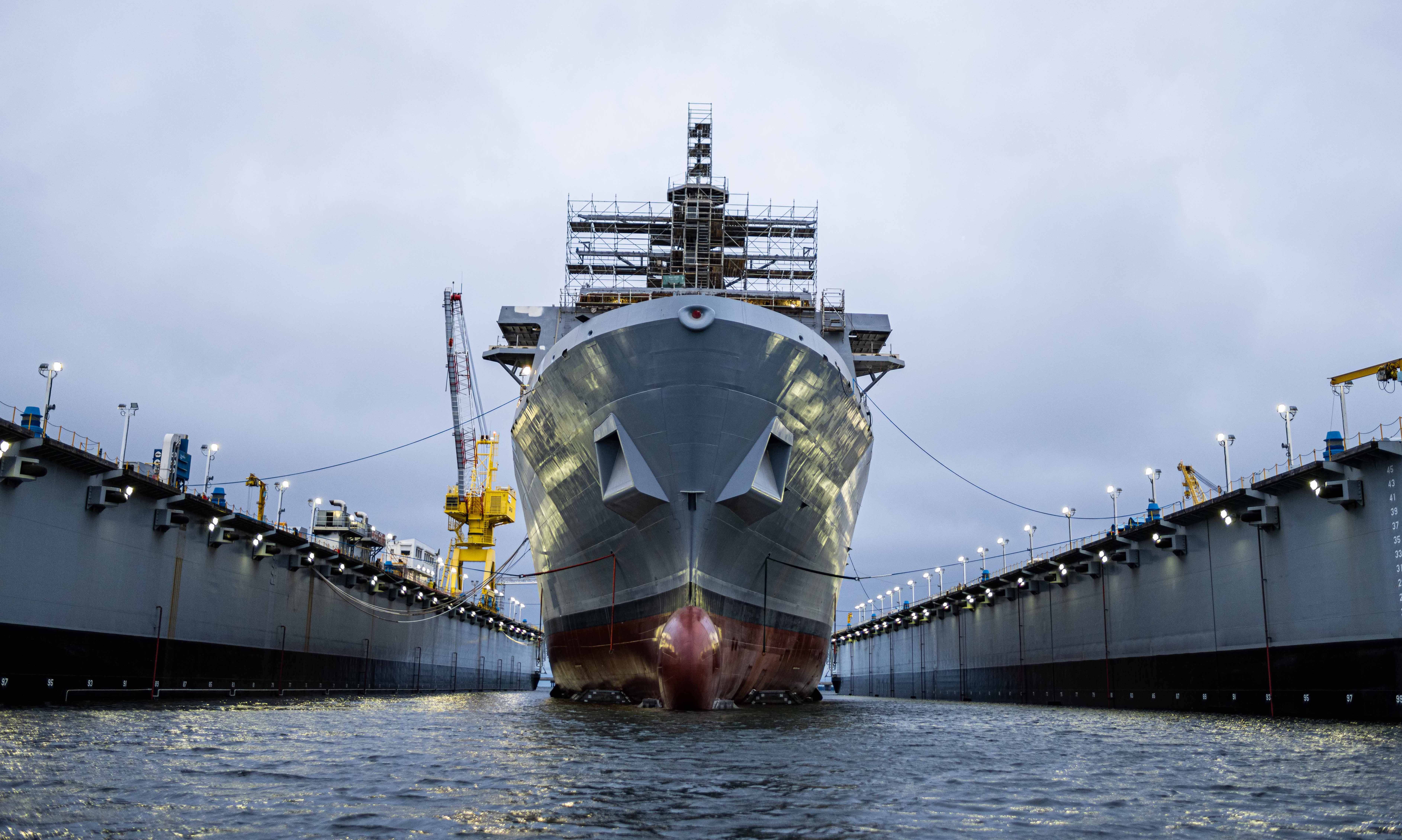
If the Marines could spend any more money as part of the Pentagon’s Fiscal Year 2023 budget, they’d ask to buy another amphibious warship.
Ranked higher than new F-35B and C Lighting II Joint Strike Fighters or Joint Light Tactical Vehicles, the number one item on the Corps’ FY 2023 unfunded priority list to Congress is $250 million in advanced procurement funding for a new Flight II San Antonio-class amphibious warship. That’s because the Navy doesn’t plan to buy the ship at the top of the Marine Corps’ wish list.
“The funding profile in the President’s budget submission essentially cancels the LPD program following the procurement of LPD-32 in FY23, a program originally planned to procure through LPD-42,” Lt. Gen. Karsten Heckl, the deputy commandant for combat development and integration, told USNI News last week.
After years of working together on naval integration, the line item is the latest example of a growing split between the Navy and Marine Corps, showing how the services have come to an impasse over the future of the amphibious fleet.
Following the rollout of the Navy’s FY 2023 budget, the state of the amphibious force structure is murky. The service’s budget proposal truncates the San Antonio-class LPD-17 Flight II production line and delays the Marine Corps’ new Light Amphibious Warship purchase.
The proposal – already receiving criticism in Congress – is exposing fissures between the two sea services over their visions for amphibious platforms.
There’s a growing divergence between the Navy and Marine Corps, specifically about the LAW, a smaller amphibious ship that’s key to the Marines’ Force Design 2030 initiative and Expeditionary Advanced Base Operations concept, multiple naval observers told USNI News last week.
“There’s this difference of opinion in the philosophy behind the LAW, which is why this debate about LPD-17 Flight II,” is happening, said Hudson Institute senior fellow Bryan Clark.
But with expensive bills like the Columbia-class ballistic missile submarine program and the Constellation-class frigate, the Navy has insisted its budget proposal balances maintaining the force it has with modernizing for the future, budget officials said on Monday.
“I think it’s money. I think if the Navy had enough money to fund all its high priority programs – aircraft carriers, frigate, the Columbia-class submarine and the Virginia-class attack submarines – as well as investing in the amphibious force, I think they would do it in a heartbeat,” Dakota Wood, a senior fellow at the Heritage Foundation and a retired Marine, said of the Navy’s proposal regarding the amphibious ships.
While buying smaller amphibious ships has become a priority for the Marine Corps in recent years, the service maintains it still also needs larger amphibious ships to complete its missions and meet combatant commanders’ needs.
The Marine Corps’ requirement remains 31 large amphibious ships – 10 big-deck LHAs and 21 LSDs or LPDs – which industry experts say should be constructed on four-year and two-year centers, respectively, Heckl told USNI News in a Thursday interview.
But the Navy’s plan to end the LPD-17 Flight II line – originally slated to include 13 ships – combined with plans to retire four Whidbey Island-class dock landing ships in the upcoming fiscal year, would bring the amphibious inventory down to 25 ships in the next five years, Heckl said.
“Amphibious warfare ships are being decommissioned faster than they are procured, delivered, and eventually available for employment,” Heckl told USNI News.
Navy and Marine Corps Divergence
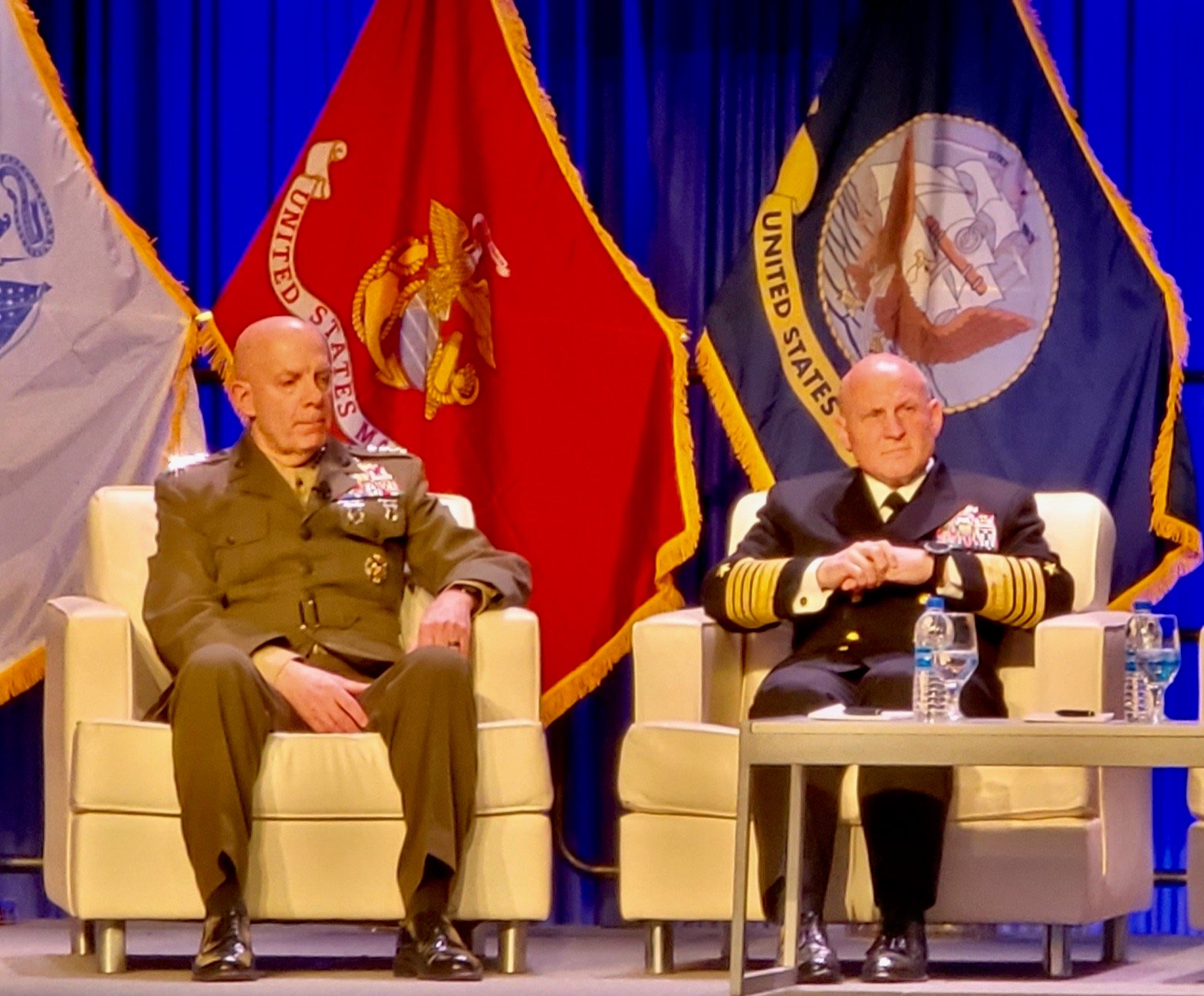
The division between the Navy and Marine Corps extends to Marine Corps Commandant Gen. David Berger and Chief of Naval Operations Adm. Mike Gilday’s public comments.
Speaking on stage in February at the WEST 2022 conference in San Diego, Calif., Gilday said the Navy needs nine LHAs and 19 or 20 LPDs/LSDs, bringing the total number of large amphibious ships to 28 to 29, which is more in line with the 24 to 28 range in the Biden administration’s FY 2022 30-year shipbuilding plan.
“Perhaps 30 or more smaller amphibious ships [are needed] to support Maritime Littoral Regiments,” Gilday said at the time, referring to ships like LAW.
At the same conference, Berger told reporters the amphibious requirements study – currently in its final stages – would likely call for approximately 31 amphibious ships. In the interview last week, Heckl maintained that 31 is the “bare minimum” number for large amphibious ships.
Navy deputy assistant secretary for budget Rear Adm. John Gumbleton told reporters last week that LPD-32 would be the last amphibious transport dock the service plans to buy in the San Antonio class.
As evident from the top item on the unfunded list, the Marines are against ending the line.
A senior congressional aide told USNI News that ending the LPD-32 line – which has largely been delivering on time and on budget from Ingalls Shipbuilding after problems in the program’s early years – is “short sighted.” Amphibious ships and the four proposed LSD retirements in the FY 2023 budget will likely be a crucial item of discussion as lawmakers draft the National Defense Authorization Act, according to the aide.
“It’s going to be a debate on the overall amphib[ious] force structure in Congress this year, so we’ll see how it all shines out in the end. But we will be debating the four LSDs and talking about amphib force structure writ large, making sure we have the minimum number of ships the Commandant needs,” the aide told USNI News.
The aide said lawmakers’ thinking is more in line with the Marine Corps’ vision of LAW as a more affordable ship the service can buy quickly and that Congress would likely push to buy the ship sooner than FY 2025. The Navy and Marine Corps need both intra-theater lift and forcible entry platforms – smaller amphibious ships like LAWs and larger ships like LHAs and LPDs, respectively – to operate in the region, the aide said.
“If your premise is that you support [these] intra-theater connectors, LAW needs to move. And when I say move, it needs to move forward,” the aide said.
The Navy’s recent request also included LHA-9, – a ship Congress has already authorized and appropriated money for – so the House Armed Services Committee is considering the ship already procured, the aide said.
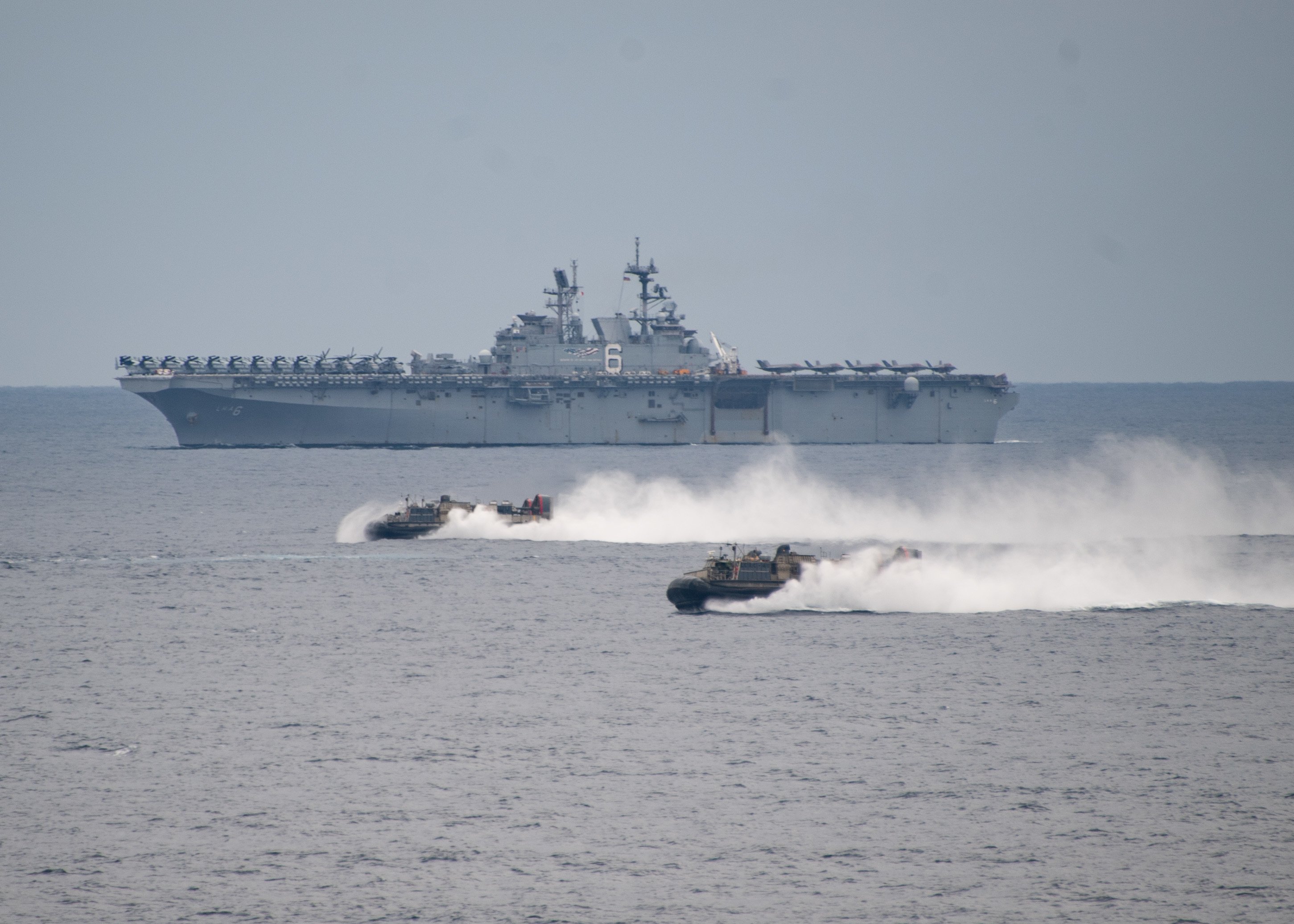
Meanwhile, the Navy doesn’t plan to buy the next LHA – LHA-10 – until FY 2031, meaning there would be an eight- or 11-year gap between LHA-9 and LHA-10, depending on the procurement year assigned to LHA-9, Heckl told USNI News. Delaying the ship’s purchase until then would make “maintaining the line completely untenable for industry, particularly the supply base that construct[s] amphibious warfare ship components,” the deputy commandant said.
As for LAW, Heckl said there’s some risk in delaying the program because the Marine Corps has already begun standing up its Marine Littoral Regiments, the formation the service converted and reshaped to move around smaller units aboard LAW.
“It’s bad. It’s very bad, because at some point as we stand up more and more MLRs, it requires more and more LAW to support them. And we’re only going to be able to go so far with leasing or finding other creative solutions with the Navy,” he said.
Still, the Navy has not formally released a Force Structure Assessment in more than five years, making it difficult to understand where the service stands.
“We really don’t know where the administration’s at because we don’t have a Force Structure Assessment out there. This amphib study is one thing, but even an amphib study with the lack of overall context about where we’re going at with regards to overall force structure, it’s kind of missing the ball with regards to telling Congress about what the military’s requirements are,” the senior congressional aide said.
Developing LAW
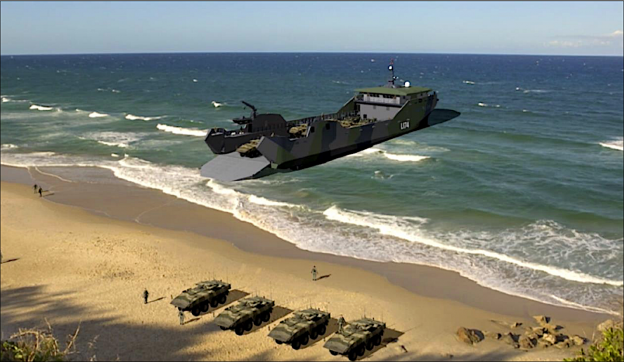
Since the Commandant became the Marine Corps’ top officer, he has put forward proposals to reshape the service, arguing it needs to become lighter and more mobile to move Marines around the Pacific in a potential conflict with China.
A crucial part of that vision is the Marine Corps using smaller, less expensive amphibious ships to shuttle smaller units of Marines between islands and shorelines, where they could set up ad-hoc bases. The LAW, which would land Marines directly ashore, is one of those smaller ships.
The idea, according to the Marine Corps, is that the Marines who move between islands and shorelines aboard LAWs could then fire anti-ship missiles, increase the risk to the adversaries’ fleet and create chaos in the theater during a potential conflict.
While the Marine Corps has said the landing ships are key to moving its new MLRs around the Pacific, the Navy has kept delaying the start of the program.
The first LAW purchase was originally slated for FY 2022 under the Trump administration’s December 2020 shipbuilding plan, but delayed to FY 2023 in the Biden administration’s FY 2022 budget. Now the first purchase is scheduled for FY 2025. The current plan is to buy one the first year, another in FY 2026 and two in FY 2027.
“The first LAW will not deliver within this FYDP,” Heckl told USNI News in a statement. Heckl was referring to the Future Years Defense Program, or the Pentagon’s five-year budget outlook.
Pushing the delivery of the first LAW past FY 2027 means the Marine Corps would receive the ship after the so-called “Davidson window,” which refers to former U.S. Indo-Pacific Commander Adm. Phil Davidson’s testimony to Congress last March that China could try to take Taiwan in the next six years.
The Marines see LAW as an affordable, smaller ship the Navy could purchase quickly for about $150 million per hull. But keeping LAW affordable has become difficult as the Navy evaluates the survivability of a ship that could end up operating in the South China Sea.
“I think they’re not on the same page. I think the Navy essentially wants to truncate the LPD-17 Flight II and use that money to instead by the Light Amphibious Warship, with the idea that the Light Amphibious Warship is going to have to be fairly survivable to be viable inside these contested environments, which means it will be relatively expensive,” Clark told USNI News. “And therefore they need the money from the LPDs to pay for them because if you have a Light Amphibious Warship that costs $300 million – which is something that’s more in the scope of what the Navy’s thinking – then if you want to buy three or four per year, that’s essentially an LPD-17.”
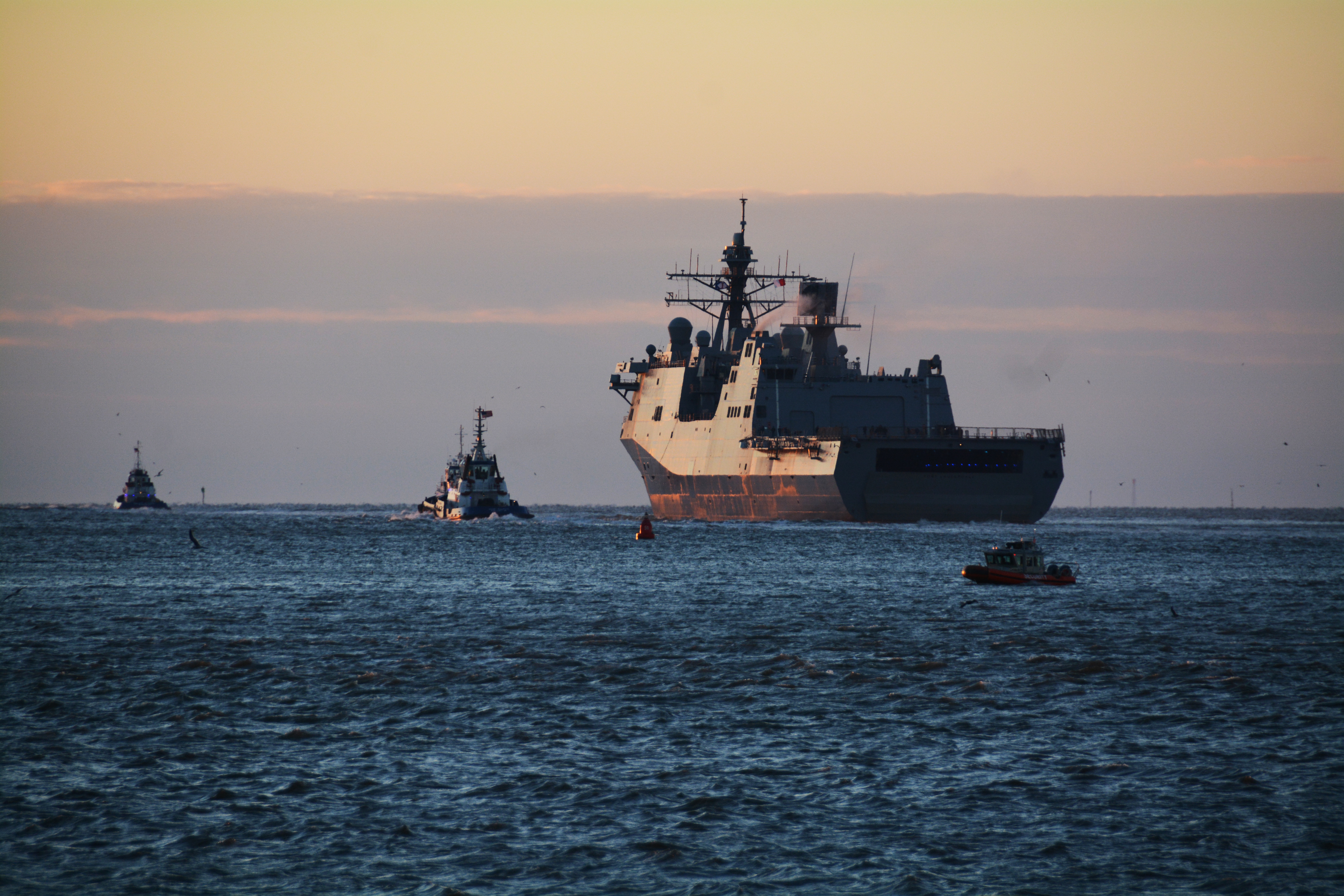
“That’s the direction the Navy wants to go. The Marine Corps wants to basically have both. They want to have the LPD-17 Flight IIs and then also buy the LAW, because they view the LAW as a much … less survivable ship, with the idea that they’re not going to drive it into highly contested environments. It’s intended to support mobility, and then if they’re getting shot at, they may not actually use it. They might keep it in port,” Clark added.
Concerned about the history of the Littoral Combat Ship program, the Navy has pushed for more requirements for LAW to make the ship more survivable, while the Marine Corps still wants to quickly buy a less expensive amphibious ship, Clark said.
“I think the debate is fundamentally [that] the Marine Corps feels they’re willing to take those risks and the Navy isn’t on board because the Navy’s worried about the kind of back-pressure they’re going to get from Congress or [the Office of the Secretary of Defense],” he added.
Mark Cancian, a senior fellow at the Center for Strategic and International Studies, said it appears the Navy and Marine Corps may have “two different visions” of LAW, diverging on how small it should be and what kind of defensive systems should go on the ship.
“I think what happened was that the Marine Corps has been running around saying, ‘large ships are too vulnerable. We will never do a large-scale amphibious assault again. We need small ships to operate inside the weapons engagement zone.’ And the Navy and OSD have heard that and said, ‘OK. OK. But what that means is we’re going to stop building large amphibs,’” Cancian said.
Asked about the delay of the LAW program, Cancian said the Navy and Marine Corps could be having a debate about what LAW should look like.
“I can imagine the discussion is about the size and capability of this ship. The Marine Corps had talked about something very small … disposable, barely ocean-capable and with a limited lifetime,” Cancian said.
“And I think the Navy may have balked at that – buying 30 ships with such limited capabilities and maybe having a discussion about buying something larger that would be globally deployable, like the old [Landing Ship Tanks], which would of course be much more expensive but much more capable,” he added. “You could put those out on a routine forward deployment. The ARGs – you could put them in ARGs, which you can’t do with LAWs, at least the original vision of the LAWs.”
Wood attributed the decision to delay LAW and end the LPD line to funding constraints, pointing to the Columbia-class program, the Constellation-class frigate and the Ford-class aircraft carriers as high priority programs where the Navy feels it cannot take any risks.
“It’s the whole category of amphibious capabilities is in competition with those other things, so then it becomes risk management and where the Navy … can take risk,” Wood said.
“There’s always been this question of how many amphibs? What do we think an amphibious force is going to do? Can it get close enough to an objective given the size of LPDs, LSDs, LHAs? So that’s been a problem for years anyway,” he added.
Wood noted the question of survivability – which is where it appears the Navy and Marine Corps disagree on LAW – is a historic problem for Pentagon programs. As the services add more defensive capabilities or armor to platforms, like the Defense Department did with mine-resistant ambush-protected vehicles during the Iraq War, they become more expensive. But Wood argued the Navy and Marine Corps cannot afford to go this route with ships.
“I don’t think there is any lost love. I think that the Navy and the Marines Corps services really do want to work well together and that they recognize the importance of naval power in an era where China poses the most substantial challenge to U.S. interests for the next two or three decades. It’s an inherently maritime environment in that part of the world,” he said.
Marine Corps Dissension
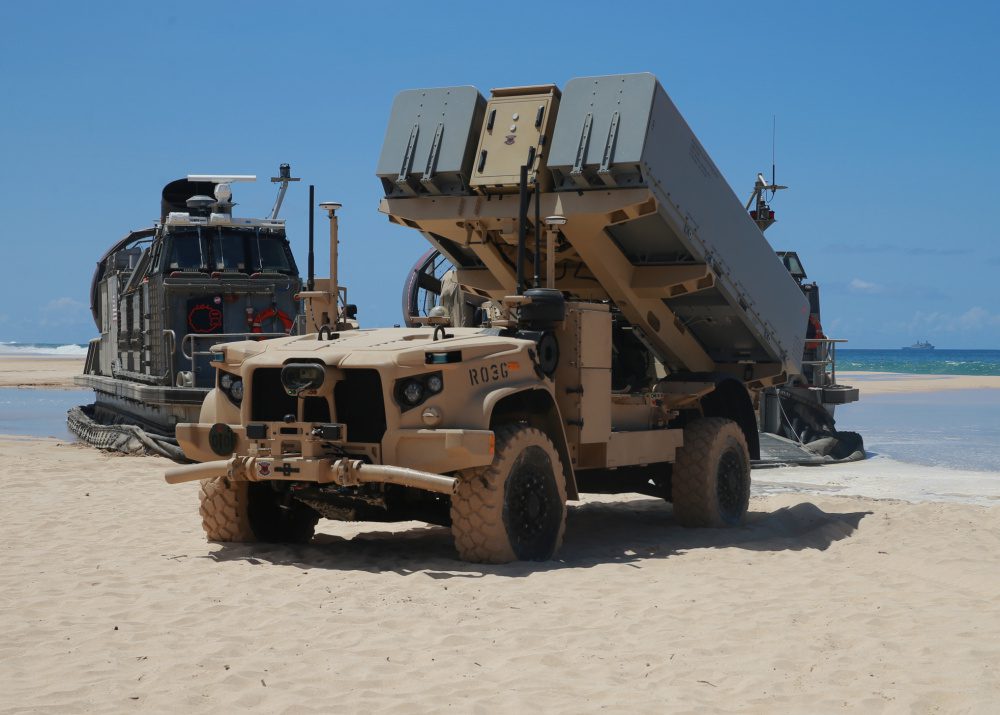
Though embraced in the civilian analyst community, the Marine Corps strategy underpinning the pursuit of LAW is facing heavy criticism from retired Marine generals and officers.
In a Wall Street Journal opinion piece last month, former Navy Secretary Jim Webb described a coordinated effort by retired Marine Corps generals – including almost two-dozen four-stars – to voice apprehensions about Berger’s plans to reshape the force by shedding heavier armor and equipment like tanks.
“After several unsuccessful attempts by retired senior officers to engage in a quiet dialogue with Gen. Berger, the gloves have now come off. The traditional deference has been replaced by a sense of duty to the Marine Corps and its vital role in our national security,” Webb wrote. “Recently, 22 retired four-star Marine generals signed a nonpublic letter of concern to Gen. Berger, and many others have stated their support of the letter. A daily working group that includes 17 retired generals has been formed to communicate concerns to national leaders.”
This means Berger is not only navigating internal Navy dynamics over the budget and the future of the amphibious force structure, but also outside criticism from his predecessors about his effort to reshape the Marine Corps.
“I think they have several concerns. One is that the Marine Corps’s getting smaller and will be challenged to meet its global commitments. One is that the structure is too focused on the western Pacific and the Marine Corps will not be able to participate effectively in operations in other areas,” Cancian, a retired Marine Corps colonel, said of the officers’ concerns.
The Marine Corps has argued that its strategy, which is focused on the Indo-Pacific, would work in other regions across the globe.
“And the third is cultural, that is that the infantry gets much smaller. Over the last 20 years, the Marines’ infantry units have probably been cut in half. The focus of certainly the MLRs is on long-range precision strike in the artillery, not the infantry,” Cancian added. “And there’s a concern that – combined with some of the talent management proposals – that the Marine Corps is getting away from its roots of excellence in ground combat, particularly close combat.”
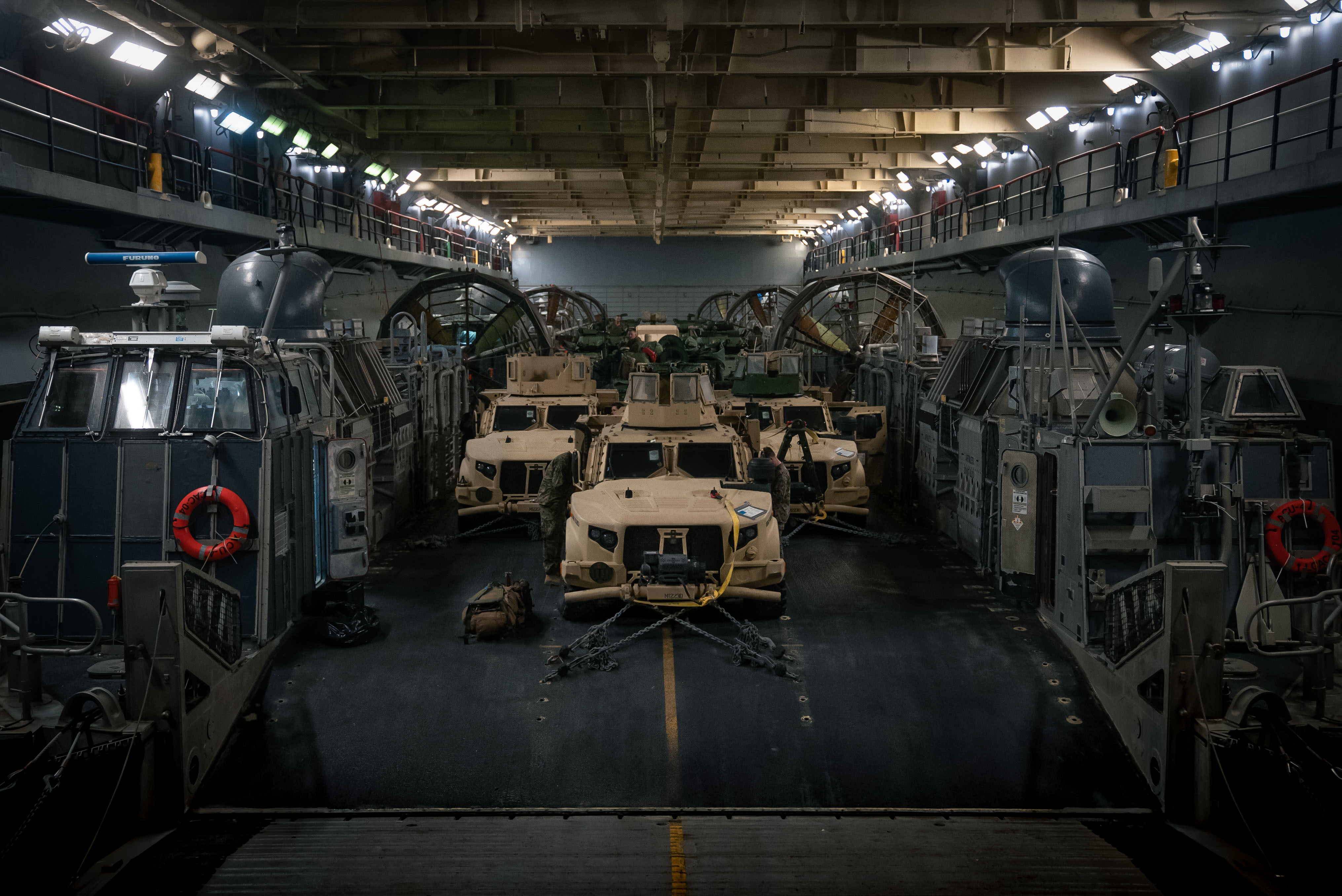
As for the amphibious force structure, Berger has argued the Marine Corps needs both the new, smaller ships like the LAW and the larger amphibious warships that make up the Amphibious Ready Groups.
“There is not a tradeoff. Our capacity in the industrial base can handle both. And I know that not anecdotally, but my conversations with leadership at places like Huntington Ingalls is [that] they have the capacity. And they are complementary capabilities,” Berger said in February when asked if the Navy can build both LAW and the larger amphibs.
“They are not a substitute for each other because a traditional amphibious ship has all the attributes that we know and love so much over the years that a Marine Expeditionary Unit and Amphibious Ready Group have been using,” Berger said.





